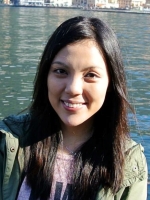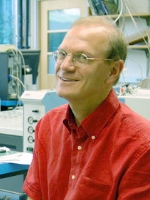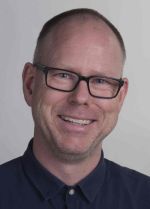Previous events - Page 212
Upcoming seminar in meteorology and oceanography:
Speaker: Helen Johnson is a Research Fellow at The Earth Sciences Department, University of Oxford (UK).
Doctoral candidate Master in Physics Endre Grøvik at Department of Physics will give a trial lecture on the given topic: "Safety of MRI contrast agents."
In the 80's Bökstedt introduced THH(A), the Topological Hochschild homology of a ring A, and a trace map from algebraic K-theory of A to THH(A). This trace map, along with the circle action on THH, have since been used extensively to make calculations of algebraic K-theory. When the ring A has an anti-involution Hesselholt and Madsen have promoted the spectrum K(A) to a genuine Z/2-spectrum whose fixed points is the K-theory of Hermitian forms over A. They also introduced Real topological Hochschild homology THR(A), which is a genuine equivariant refinement of THH, and Dotto constructed an equivariant refinement of Bökstedt's trace map. I will report on recent joint work with Dotto, Patchkoria and Reeh on models for the spectrum THR(A) and calculations of its RO(Z/2)-graded homotopy groups.
Adam Sørensen (Oslo) will give a talk with title: Overlapping qubits
Abstract: I will discuss the paper "Overlapping Qubits" by Chao, Reichardt, Sutherland, and Vidick (arXiv:1701.01062 - category: Quantum Physics!). Qubits are the bits of quantum computing. In the paper the authors take the point of view that a qubit mathematically is described by a pair of anticommuting reflections on a finite dimensional Hilbert space. Two qubits are independent if their defining operators commute. The central point of the paper is that when performing observations we should not expect two qubits to be exactly independent, rather we should expect them to be almost independent, i.e. the norms of the commutators should be small. This naturally leads to questions about almost commuting matrices, which is why I care. I will attempt to explain how questions of almost commuting matrices come up, and how the physicists answer them.
Late Lunch Talk by Melissah Rowe, CEES
Yi Jing Phua, Condensed Matter Physics (CONDPHYS), Department of Physics, UiO
Erik Hobbie, Terrestrial Ecology, University of New Hamphsire
Welcome to GeoHyd Lunch Seminar Friday March 10th @ 12:15 in Aud 2 in the Geology building.
Lise Christensen, Associate Professor DARK cosmology Centre, Niels Bohr Institute, University of Copenhagen
Large Eddy Simulation of the interaction of water waves with turbulent air flow
Youssef Ouknine (Cadi Ayyad University, Marrakesh, Morocco) gives a lecture with the title: Optimal stopping with f-expectations: the irregular case.
Khalifa Essebaly (Cadi Ayyad University, Marrakesh, Morocco) gives a lecture with the title: Optimal rates for parameter estimation of stationary Gaussian processes.
The evolution of reaction norms such as thermal performance is tightly linked to ecological processes, and eco-evolutionary models can provide important insights especially in varying environments.
by
Joshua Davies
From University of Geneva, Genève
This thursday, at the Speciation Journal Club, we will discuss a paper on Transitions between phases of genomic differentiation during stick-insect speciation, by Riesch et al. 2017 (Nature Ecology & Evolution)
By Jeffrey Hutchings from Dept. of Biology, Dalhousie University, Canada & CEES
Aritra Gupta, HCRI, Allahabad
The most widely studied scenario in dark matter phenomenology is the thermal WIMP (Weakly Interacting Massive Particle) scenario. Inspite of numerous efforts to detect WIMP, till now we have no direct evidence for it. A possible explanation for this non-observation of dark matter could be because of its very feeble interaction strength and hence, failing to thermalise with the rest of the cosmic soup. In other words, the dark matter might be of non-thermal origin where the relic density is obtained by the so called freeze-in mechanism. Furthermore, if this non-thermal dark matter is itself produced substantially from the decay of another non-thermal mother particle, then their distribution function may differ in both size and shape from the usual equilibrium distribution. In this talk I will discuss about such a non-thermal (fermionic) dark matter scenario in the light of a new type of U(1)B-L model. The model is interesting, since, besides being anomaly free, it can give rise to neutrino mass by Type II see-saw mechanism. Moreover, we will see, that it can accommodate a non-thermal fermionic dark matter as well. Starting from the collision terms, ...(cont. below)
(The slides will be available here)
Lan Zhang (University of Illinois at Chicago, Department of Finance) will give a seminar in the lunch area, 8th floor Niels Henrik Abels hus at 14:15.
Upcoming seminar in meteorology and oceanography:
Speaker: Eric Chassignet, Professor and Director of the Center for Ocean-Atmospheric Prediction Studies, Florida State University
Knut-Endre Sjåstad at the Department of Geosciences will be defending his dissertation: Use of lead isotopes in forensic science, analysis and evaluation
Yoann Génolini, LAPTH Annecy
Recent experiments (notably PAMELA and, more recently, AMS-02) are ushering us into a new era of measurements of cosmic-ray fluxes with greatly reduced statistical uncertainties. These high precision measurements offer new opportunities for a number of astroparticle problems, such as indirect dark matter searches. In particular, astrophysical anti-particle fluxes are thought to be produced only by collisions of cosmic rays on the interstellar medium, and their relatively low flux makes them a channel of choice to look for rare processes. Nonetheless, the prediction of these expected backgrounds relies on a precise modeling of the cosmic ray propagation and interaction in the Galaxy, usually constrained by « secondary over primary » ratios. I will show that the predictions for the most widely used among these probes, the boron-to-carbon ratio (B/C), strongly depends on underlying assumptions. Under some simplified hypotheses on the propagation scenario, I will present two of our studies reevaluating anti-protons and positrons fluxes in the light of new AMS02 data, and discuss the implications for dark matter. (continued below)
(The slides will be available here)
John Webb, Professor at University New South Wales, Australia
Doctoral candidate Knut-Endre Sjåstad at the Department of Geosciences will give a trial lecture on the given topic: The control of stable isotope compositions in food and mineral water: ways of detecting frauds and assessing the robustness in data analysis
Velkommen til filmvisning av The Andromeda Strain. Professor i kjemisk livsvitenskap, Carl Henrik Gørbitz, skal snakke om hva som gjør den unik blant romvesenfilmer.
This thursday, at the Speciation Journal Club, we will discuss a paper on levels of nucleotide diversity in homologous regions of the avian genome, by Dutoit et al. 2017 (Proceedings B)





